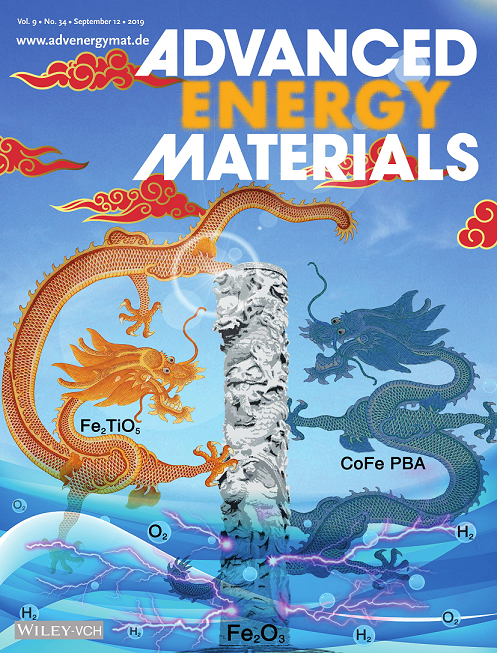Friday, 20 September 2019
Enhanced hematite-based photoanodes for more efficient solar water splitting cells
Cheaper and better performing photoelectrochemical water splitting cells could be designed in the next future thanks to a new technology developed at the Catalan Institute of Nanoscience and Nanotechnology (ICN2), the Catalonia Institute for Energy Research (IREC) and the Institute of Chemical Research of Catalonia (ICIQ). Recently published on Advanced Energy Materials, this research has involved the ICN2 Advanced Electron Nanoscopy group and the Nanostructured Materials for Photovoltaic Energy group.

Solar water splitting using photoelectrochemical cells (PECs) has emerged as a promising technology to convert solar energy and produce hydrogen as a renewable fuel source. An important limitation to a broad implementation of this technology is its scalability and affordability. Developing an efficient and cheap photoanode that is stable in acidic electrolyte is particularly challenging.
Many research studies are focusing on designing cells based on semiconductor materials that are abundant in the Earth soil, such as hematite. This is a common iron oxide which has also other interesting properties, including a relatively small bandgap. Regrettably, though, it holds poor catalytic properties, therefore its surface needs to be modified with materials that are able to accelerate water splitting, i.e. water-oxidation catalysts (WOC).
The catalysts that are currently largely used in state-of-the-art PECs are based on very expensive noble metals, such as ruthenium and iridium. Possible alternatives are being explored, but a satisfactory solution has not been found yet.
Researchers at the Catalan Institute of Nanoscience and Nanotechnology (ICN2), the Catalonia Institute for Energy Research (IREC) and at the Institute of Chemical Research of Catalonia (ICIQ) have developed photoanodes made of heterostructured nanowires, which present enhanced catalytic performance, while maintaining good light absorption features and a high stability in acidic media. This study, which has been recently published on Advanced Energy Materials, has involved the ICN2 Advanced Electron Nanoscopy group, led by ICREA Prof Jordi Arbiol, and the ICN2 Nanostructured Materials for Photovoltaic Energy group, led by Dr. Mónica Lira-Cantú. The ICN2 and the ICIQ are members of the Barcelona Institute of Science and Technology (BIST).
The fabrication process of these photoanodes starts from a core hematite nanowire, which is covered with a film of titanium dioxide. This coated surface is subsequently transformed through a chemical process to produce a Fe2O3/Fe2TiO5 heterostructured nanowire, which shows increased photocatalytic activity. Then a nanolayer of an acid-stable WOC (CoFe-PBA) is deposited on the structure, resulting in a photocurrent response almost one order of magnitude higher than that observed in simple hematite nanowires.
These exciting results open the way to the development of novel cheap and efficient hematite-based photoanodes to be used in acidic electrolytes. The future solar-fuel generation is now a step closer.
Article reference:
Peng‐Yi Tang, Li‐Juan Han, Franziska Simone Hegner, Paul Paciok, Martí Biset‐Peiró, Hong‐Chu Du, Xian‐Kui Wei, Lei Jin, Hai‐Bing Xie, Qin Shi, Teresa Andreu, Mónica Lira‐Cantú, Marc Heggen, Rafal E. Dunin‐Borkowski, Núria López, José Ramón Galán‐Mascarós, Joan Ramon Morante, and Jordi Arbiol, Boosting Photoelectrochemical Water Oxidation of Hematite in Acidic Electrolytes by Surface State Modification, Advanced Energy Materials, Vol.9, Issue 34, Sept 2019 https://doi.org/10.1002/aenm.201901836

